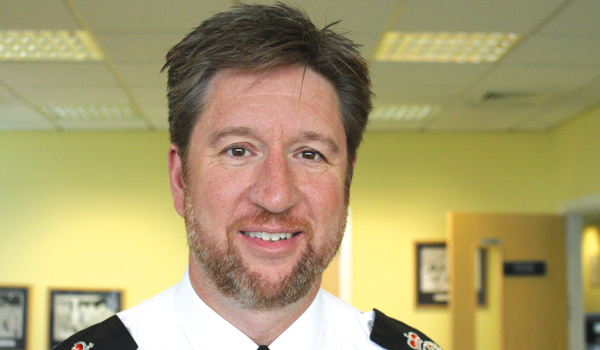Can VAWG really be halved?
Bethan Shellard-Dedman says the Prime Minister’s promise to halve violence against women and girls is to be welcomed, but there are many barriers to overcome.
Violence against women and girls (VAWG) is a term that is now used for a wide range of crimes that more commonly affect women and girls than men, such as domestic abuse, sexual offences and harassment.
These are wide-ranging offences and we know that they are under-reported and under-prosecuted, with some experts in the field even referring to the decriminalising of rape in England and Wales.
In the run-up to the election the new Prime Minister, Sir Keir Starmer, announced his intention to halve VAWG. This was repeated in his first PMQs, where he further stated that his government had already started work on this national emergency and would be working to tackle the radicalisation on young men online.
This announcement is, of course, to be welcomed. However, for the reduction in VAWG to be successful there are several areas that need deeper consideration and attention. In particular there appears to be significant problems with the reporting of rape.
Cultural
If we subject this pledge to scrutiny it allows for some understanding of the plethora of hurdles faced by women attempting to access justice and safety from the criminal justice system in England and Wales.
On reporting an offence the attending officer may hold beliefs in rape myths, a host of stereotypes and misconceptions that include victim blaming about rape and serious sexual offending that studies have found are not only prevalent in the police but in the wider population as well.
There is a history of research on policing culture; while it has been used to describe the transfer of experiential learning and sense of camaraderie among police officers, it is often used as a pejorative term to describe internally accepted practice and norms of behaviour.
There has been a lot of research on the impact of policing culture on women, from the roles that they work in (Louise Westmarland) the impact of the importance of time on their promotion prospects (Marisa Silvestri) to the barriers that they face in the workplace (Sarah Charman). This culture has also been linked to rape myth acceptance and issues with referring cases to the Crown Prosecution Service (CPS) due to rape myth acceptance within policing culture.
Organisational
The department in which the officer works may be short staffed and carrying a large workload, which prevents them giving full attention to each job on their workload. In addition, they may face significant delays in digital and forensic submissions due to the cuts in these services.
In her report, Baroness Casey indicated that the cuts due to austerity were disproportionately felt by units that were primarily responsible for keeping women and girls safe. The much talked about recent uplift programme has led to police numbers still below that of 2010. The service as a whole is much more inexperienced as well.
Criminal justice problems
If a victim successfully negotiates these, then they need support from the CPS to authorise a charge for the offence. This can be a problematic area. Should the communication issues between the police and CPS become resolved and disclosure is completed and the victim has got this far without feeling as though it is she has been investigated and not the suspect, then begins the wait for a court hearing to begin. Rape Crisis has reported that as of March 2024 there are 10,141 sexual offence cases awaiting a court hearing.
During that wait, if the victim engages with counselling then the notes from that counselling may be used in court. A change to this was agreed to only in April 2024. If the victim still has not withdrawn support for the prosecution in order that they may try to rebuild their lives and they do go to court, then they can face intimidation from the public gallery or delays due to utilising special measures. A Ministry of Justice report from 2021 found that there is insufficient technology available across the whole court estate to support all special measures for victims, such as live link evidence, which could help prevent such intimidation.
When considering these factors, the high attrition rate for rape offences becomes easy to understand.
However, these barriers also exist for the reporting of other VAWG issues, such as domestic abuse.
Additionally, there are issues surrounding the use of the family courts. There has been an increase in reporting on some of the actions of the family courts in perpetrating the control of the offender in abusive relationships, with Women’s Aid describing them as unsafe and traumatic for women. This is an issue that has been the subject of impactive campaigning by Kate Kniveton, who gave up her anonymity to highlight the way in which the family court forced her to pay for her abuser to maintain contact with their child.
Wider protective services
In light of these barriers to justice and safety, Sir Keir Starmer’s aim to reduce these crimes is important and laudable, but there are many other challenges to consider.
This specific question at PMQs arose from a report into the sexist abuse faced by female paramedics, however, there have also been reports of the misogyny in the fire service, the 2021 Inquiry into the Armed Forces and the groundbreaking Casey review into the Metropolitan Police, which uncovered structural misogyny. These reports reveal the challenges faced by women who work in the services that we expect to keep women safe. If these women are not safe, how can we reasonably expect women in the public to be kept safe?
The future
In addition to online restrictions to radicalisation it may be that the structures and culture within the public services are also subject to scrutiny and reform. One of the ways in which this might be achieved is through representation.
The Casey review, for example, shows a positive increase in the percentage of female officers being recruited. However, as was recently pointed out by Professor Charman in ‘Not just a numbers game: assessing the journey of women in policing from representation to inclusion’, while increasing the numbers of women in the police can help with issues such as police legitimacy, VAWG cannot be resolved by this means alone.
A study into the impact of family on policing senior leadership teams found that even where women are represented, they are likely to have engaged in the same long hours culture as their male counter parts and are likely to have far fewer children than men at that level. This can mean, therefore, that those making key policing decisions can have similar life experiences leading to a lack of change in decision-making.
There is now a wealth of research that supports that police promotion processes and culture means that those who are in key leadership roles are a ‘homogeneous’ group. The Casey review indicated that this was, in part, responsible for the decision making that meant that the austerity cuts were felt disproportionately by the units that dealt with VAWG.
The present government has an overwhelming parliamentary majority, and, in Jess Phillips, a passionate and experienced campaigner in the Home Office with a brief to focus on domestic violence and safeguarding. However, the systemic barriers that women face when accessing justice need a considered and systematic strategy which considers all aspects of the criminal justice system, family law system and the wider public services. I am hopeful that the Prime Minister will succeed.
Bethan Shellard-Dedman has 16 years’ experience as a police officer across a variety of roles. She holds a Master’s degree in Crime and Justice and is now a lecturer at the University of South Wales.





